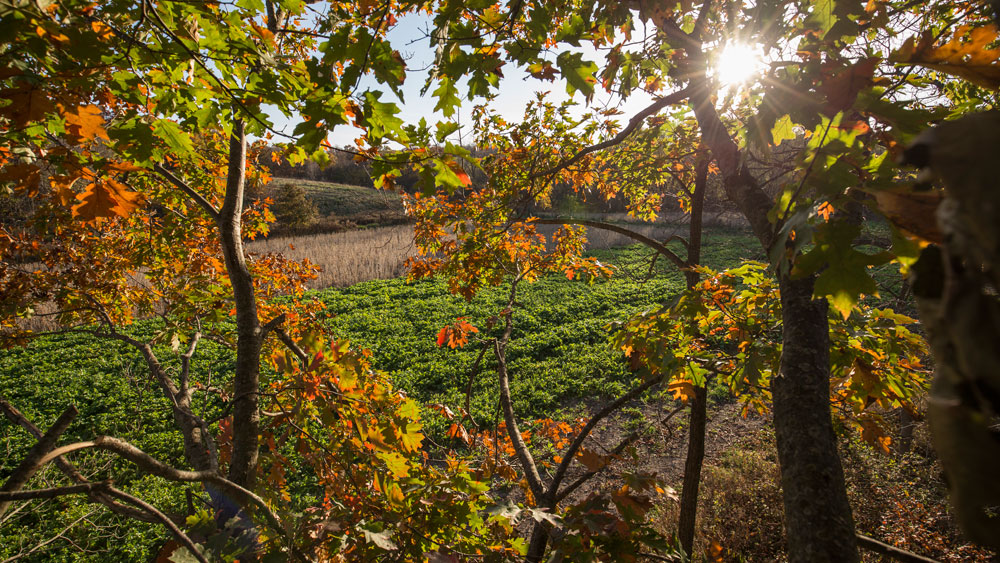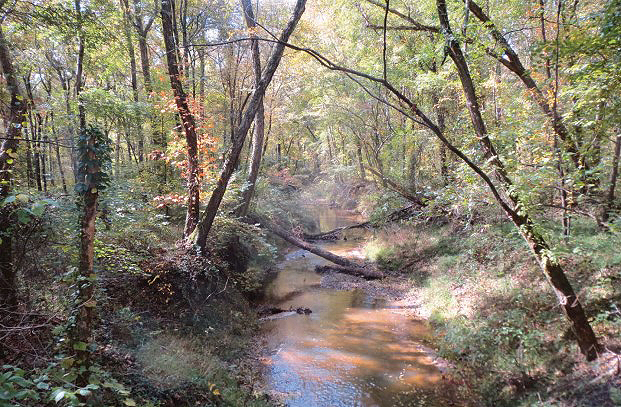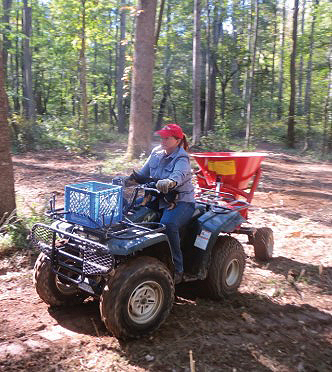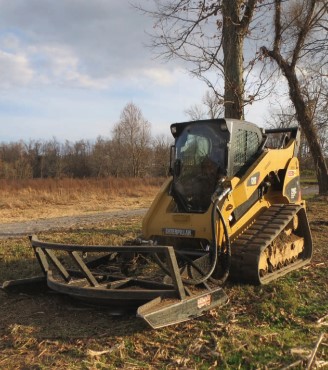Brenda Valentine | Originally published in GameKeepers: Farming for Wildlife Magazine

Begging Mr. Longfellow's pardon, but we are borrowing half of a line from one of his famous poems, “I think that I shall never see a thing more lovely than a forest of trees.” Nor do I believe I shall ever see a thing less lovely than a forest of trees following someone who is sloppy with a chainsaw and bulldozer. This is not to say that I don't recognize the need or advantages of managing timberlands, but I longed to find a kinder-gentler, less-destructive way to thin, enhance and gain access to my own forests.
The thoughts of dealing with stumps, dozer piles, rotting tree laps, muddy ruts and the destruction of young desirable trees kept me from doing anything with a particular 70 acre tract of timber covered bottomland. My experience with heavy equipment, mainly a track hoe & bulldozer clearing mostly brushy fencerows and overgrown thickets, has been positive, but to turn those big machines lose to rip through a pristine woodland was more than I could stand.

Part of this tract of land lies in a flood plain, all of it was virtually inaccessible and totally unproductive. The timber had never been cut and not even a footpath existed. Towering poplar and several varieties of oak had matured there while a literal jungle of briars, iron-wood, and cane made it impossible to walk through most places. To add to the inhospitableness, much of the land was covered with wet weather seepages and drainage ditches that would suck the shoes off a horse and leave them floundering in the stinking muck. We were getting no use whatsoever from this acreage and it rankled me to pay taxes on ground and not even be able to access it.
The summer of 2012 will go down in history as one of the driest for this area. In midsummer I began to ponder again the possibilities of how to gain entry to this woodland without creating “scars” that may never heal.

prepared by the larger equipment. The author
followed with a spreader to broadcast seed and
fertilize.
Simply by chance, I thumbed through the Yellow Pages of the phone book and randomly picked a number. It was Swift Environmental Maintenance Contractors in Murray, KY. I explained to the owner, Dale Swift, my dilemma and how presently the only way onto to the property was by parachute, but I couldn't stand the thought of creating huge dozer piles or damaging my good trees. I wanted to open up a few small honey-hole food plots, maybe plant a few soft mast trees and have a road just wide enough to access them with a small tractor but I didn't want stumps or log piles left to rot. And while I was making out this wish list I added that it would be nice to somehow have a simple means for crossing the numerous 3 to 4 foot deep drainage ditches. I realized even while I was saying it that he probably thought I was some crazy tree-hugging woman with a jacked-up imagination asking for the impossible. Seemingly unfazed by my call, Dale promised that he and his son, Mason, would come out soon and take a look at the job while the ground was dry.
Armed with snake sticks, bug spray, and flagging tape we clawed through the choking, scratching tangle of undergrowth and tried to imagine what it might look like opened up. I crawled down game “tunnels” since the undergrowth was too high and thick to see over and flagged a winding path between mature trees and around bogs keeping an eye open for a few 3/4 acre size openings that would require minimal removal of small undesirable trees to create ideal staging areas for bucks and strut zones for gobblers. With a promise of no mass destruction to the integrity of my forest, I was ready for Swift Environmental to go to work.
Two skid-steer machines with enclosed cabs, rubber tracks and a mulcher attachment mounted on the front munched their way through the densest tangles of undergrowth imaginable. The mulcher's could easily chomp down six-inch trees and reduce them to slivers of mulch in a couple of minutes. The rubber tracks on the machine left hardly a print in the soft earth plus the pulverized wood chips practically paved the newly opened road as it went along.
The ditch crossing problems were easily remedied with several sections of reinforced plastic culvert material purchased from our local building supply store and a couple loads of pit-run gravel also bought locally. The mulcher head on one skid steer machines was swapped for a bucket-loader attachment for ferrying the culverts to the ditches followed by enough gravel to tamp solidly around it and smooth over the top. This allows the water to continue to drain uninterrupted from the low ground while keeping the newly built road from washing out during a heavy rainfall. There was a total of 7 culvert crossings installed and I am happy to say they have all withstood the rigors of flash flooding.
With the roadway opened and the ditches crossable it was time to figure the most appropriate places to incorporate a few openings for food plots. For this I resorted to topo maps, Google Earth, common sense and boot leather. In the end I think it is always common sense that offers the best advice. With the new road offering never-before access I was able to actually see the types of trees and strategize on deer and turkey use areas.

mulcher to level the ground and clean up any
debris or small stumps.
There were two particular areas with several mature mast producing white oaks. Mr. Swift agreed to clear away all lesser-quality trees from around these valuable attractant trees. The mulcher attachment was called into action again, cleaning the thorny thickets and opening the way for the small honey-hole plots I planned to plant deep inside the timber. The next tool to come from his bag of environmental enhancement tricks was a brush cutter attachment or bush hog as many folks might refer to it. This attachment widened the road and smoothed the plot areas taking out any remaining short stumps as well as surface roots, dead limbs or ground litter. The “jungle” was being transformed to a park-like setting all in only a few hours.
The final step to this project worked like magic and eliminated a lot of the soil prep work I had anticipated doing once the land was cleared. The tiller attachment reminded me of a street sweeper maneuvering around large trees, pulverizing the top few inches of soil and incorporating the ground mulch into the soil. It prepared a seed bed better than any of our tractor implements, the rich loose soil worked up perfectly for immediate sowing. When each plot was tilled as smooth as fresh snow I followed on an ATV equipped with a spreader. Before the sunset that day we had BioLogic Clover Plus and Trophy Oats resting in virgin soil.

oaks were released. Note the tiny clover
seedlings just coming up
While I marveled at the time and cost efficiency of this job I kicked myself for not discovering it sooner. There is not one unsightly brush pile or stump to mar the unspoiled beauty of the place. There are no deep ruts to scar and erode and none of the healthy young trees were damaged.
This low impact method of clearing has no soil or root disturbance to harm trees or tender vegetation. The small rubber-tracked machines are very maneuverable and cause little ground pressure yet the multiple trips made up and down the road packed it firm enough to drive a street vehicle on it with no problem.
We positioned REDNECK hunting blinds the next day and within a week there were tender shoots of oats and clovers poking up. Later in the fall I planted a few apple trees within the openings for future wildlife habitat enhancement. I took a nice buck the first season from the property and have high hopes for a successful spring turkey season. This area has become my "special place" not just for the hunting but for the quiet beauty and the peacefulness of the woods. I revel in having a quaint road to walk and explore the ever-changing woods without having my boots stuck in mud or my ears ripped off by briars. Mr. Longfellow was right; I think that I shall never see a thing more lovely than a tree.































